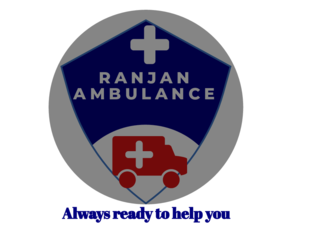
Ambulance Service in Jehanabad: A Lifeline in Critical Times
Introduction
In the district of Jehanabad, Bihar, ambulance services play a crucial role in ensuring timely medical assistance to those in need. With its unique challenges and demands, the ambulance service in Jehanabad is not just a means of transportation but a vital link in the healthcare infrastructure. This article delves into the operations, challenges, and impact of ambulance services in Jehanabad, highlighting their significance in saving lives and improving healthcare access.
Overview of Ambulance Services
Ambulance services in Jehanabad are primarily operated by both government and non-governmental organizations. The district hospital, primary health centers (PHCs), and private hospitals each play a role in providing emergency medical services through their fleet of ambulances. These services cater to a wide range of medical emergencies, including accidents, childbirth, cardiac emergencies, and more.
Types of Ambulances
Government Ambulances: Managed by the district administration, these ambulances are often stationed at district hospitals and PHCs. They are equipped with basic medical facilities and staffed by paramedics trained to handle emergency situations.
Private Ambulances: Operated by private hospitals and NGOs, these ambulances vary in their level of equipment and medical staff. Some are basic transport vehicles, while others are equipped with advanced life support systems depending on the provider’s capabilities.
Operational Challenges
Despite the critical role they play, ambulance services in Jehanabad face several challenges that impact their effectiveness:
Infrastructure and Road Conditions: Many parts of Jehanabad have underdeveloped roads and infrastructure, making it difficult for ambulances to reach remote areas swiftly, especially during monsoon seasons when roads can be impassable.
Resource Allocation: Limited funding often restricts the number of ambulances available and their maintenance. This can lead to delays in response times during peak hours or emergencies.
Staffing and Training: Paramedics and drivers require specialized training to handle medical emergencies effectively. However, the availability of trained personnel is limited, affecting the quality of care provided during transit.
Impact on Healthcare Access
Despite these challenges, ambulance services in Jehanabad have a profound impact on healthcare access:
Emergency Response: Ambulances ensure that patients can receive timely medical care, reducing mortality rates due to delays in transportation.
Maternal and Child Health: In rural areas, ambulances are crucial for transporting pregnant women to healthcare facilities during labor, thereby reducing maternal and infant mortality rates.
Community Outreach: Ambulance services also play a role in community health education, raising awareness about emergency preparedness and the importance of timely medical intervention.
Case Studies
To illustrate the impact of ambulance services in Jehanabad, consider the following scenarios:
Accident Response: A prompt response by an ambulance to a road accident in a remote village saved the lives of several individuals who required immediate medical attention.
Maternal Care: An ambulance transported a woman in labor from a village to a hospital, where she safely delivered her baby due to timely medical intervention.
Cardiac Emergency: A patient experiencing a heart attack received timely treatment en route to a hospital, thanks to advanced life support systems available in the ambulance.
Improving Ambulance Services
To enhance ambulance services in Jehanabad, several measures can be considered:
Investment in Infrastructure: Improving road conditions and infrastructure can reduce travel times and enhance accessibility, particularly in rural areas.
Capacity Building: Providing regular training programs for paramedics and drivers can enhance their skills in handling emergencies effectively.
Public-Private Partnerships: Collaborating with private healthcare providers and NGOs can expand the fleet of ambulances and improve service coverage.
Technology Integration: Implementing GPS tracking and communication systems can improve coordination and response times during emergencies.
Conclusion
Ambulance services in Jehanabad are indispensable in providing timely medical care and improving healthcare access, despite facing numerous challenges. By addressing these challenges through strategic investments in infrastructure, capacity building, and technology, the district can further enhance its emergency medical services. The impact of efficient ambulance services extends beyond saving lives—it contributes to a healthier community and ensures that healthcare services reach those who need them the most. As Jehanabad continues to develop and prioritize healthcare infrastructure, the role of ambulance services will remain critical in shaping the district’s healthcare landscape for the better.
